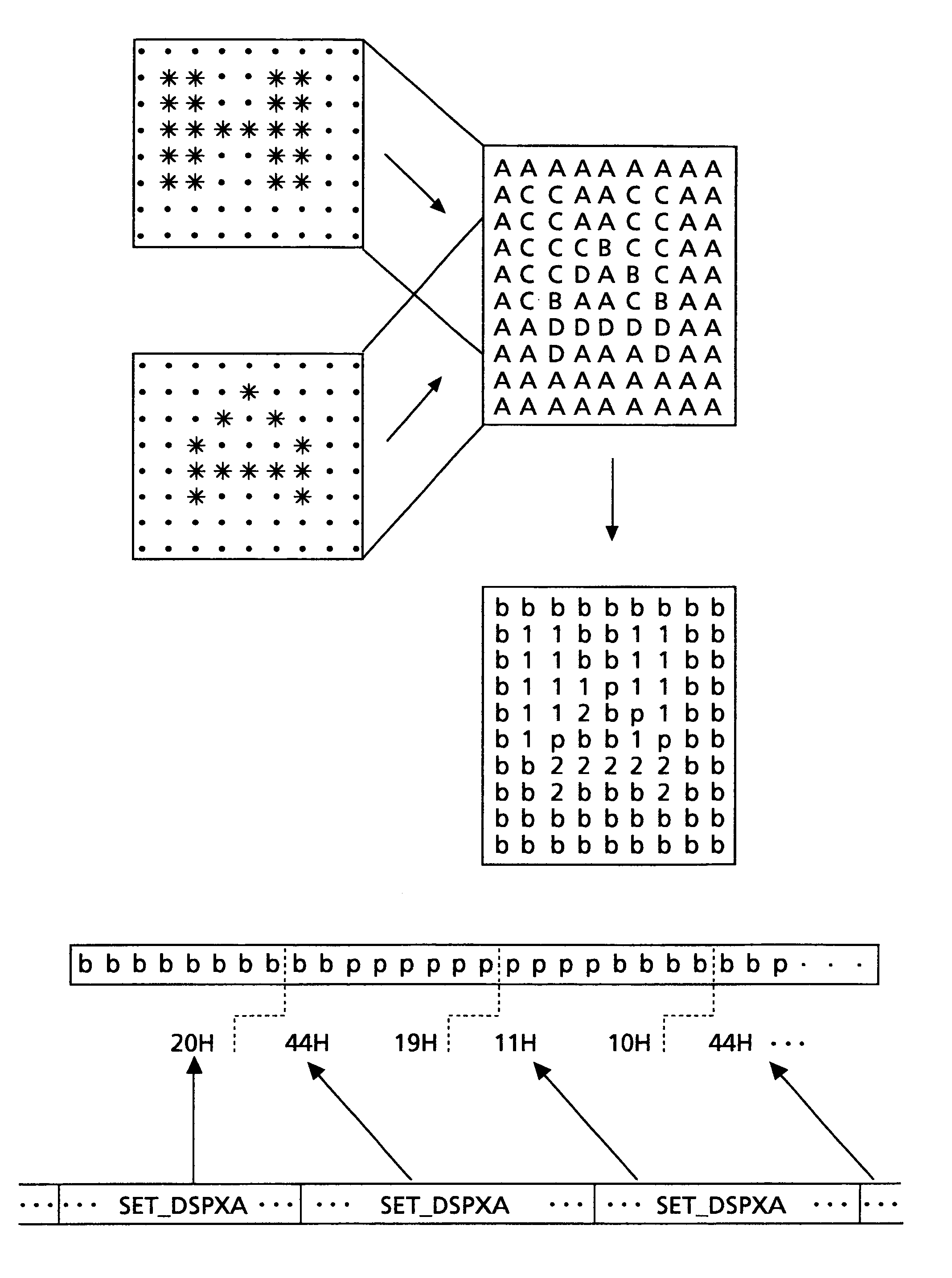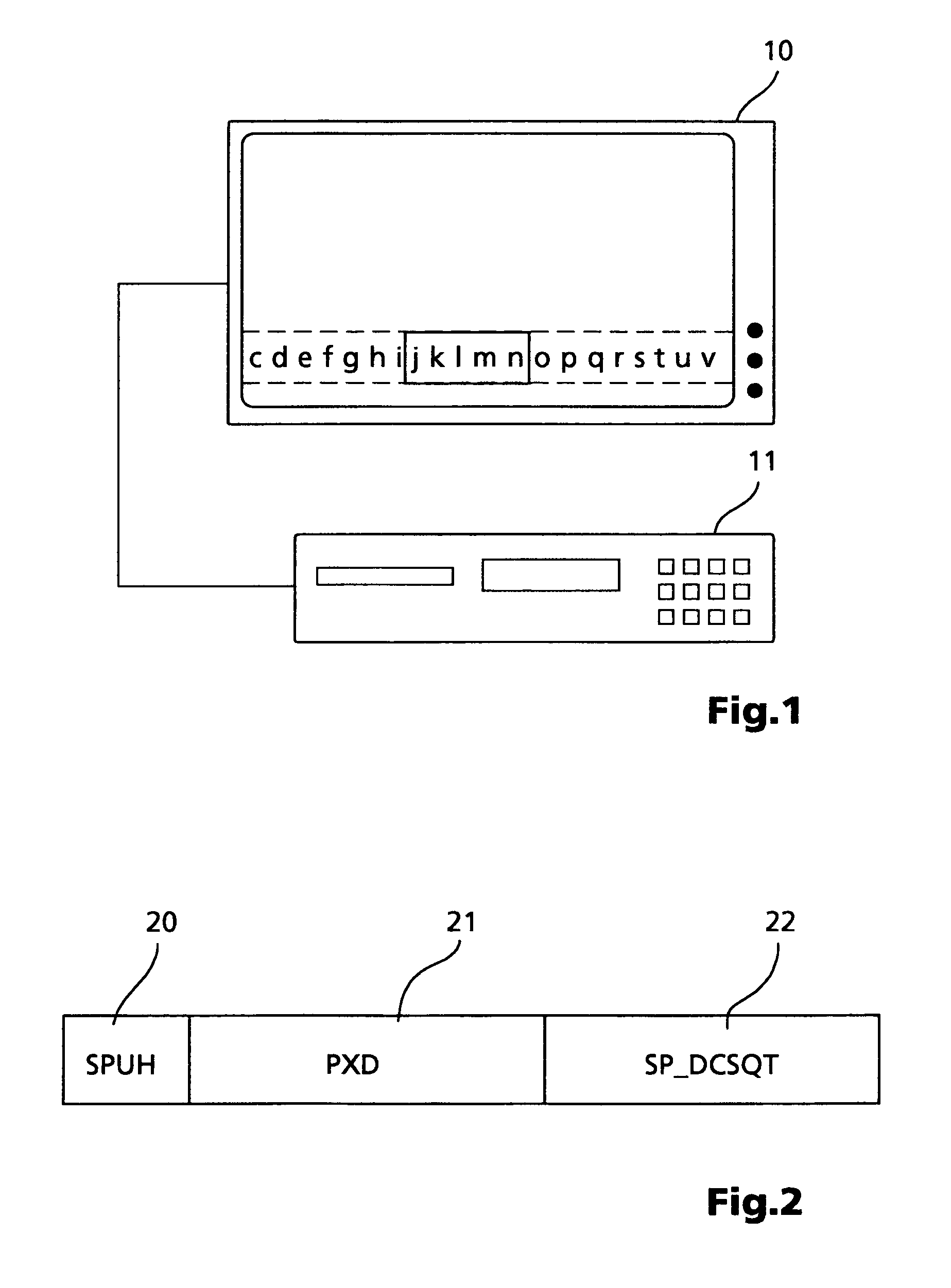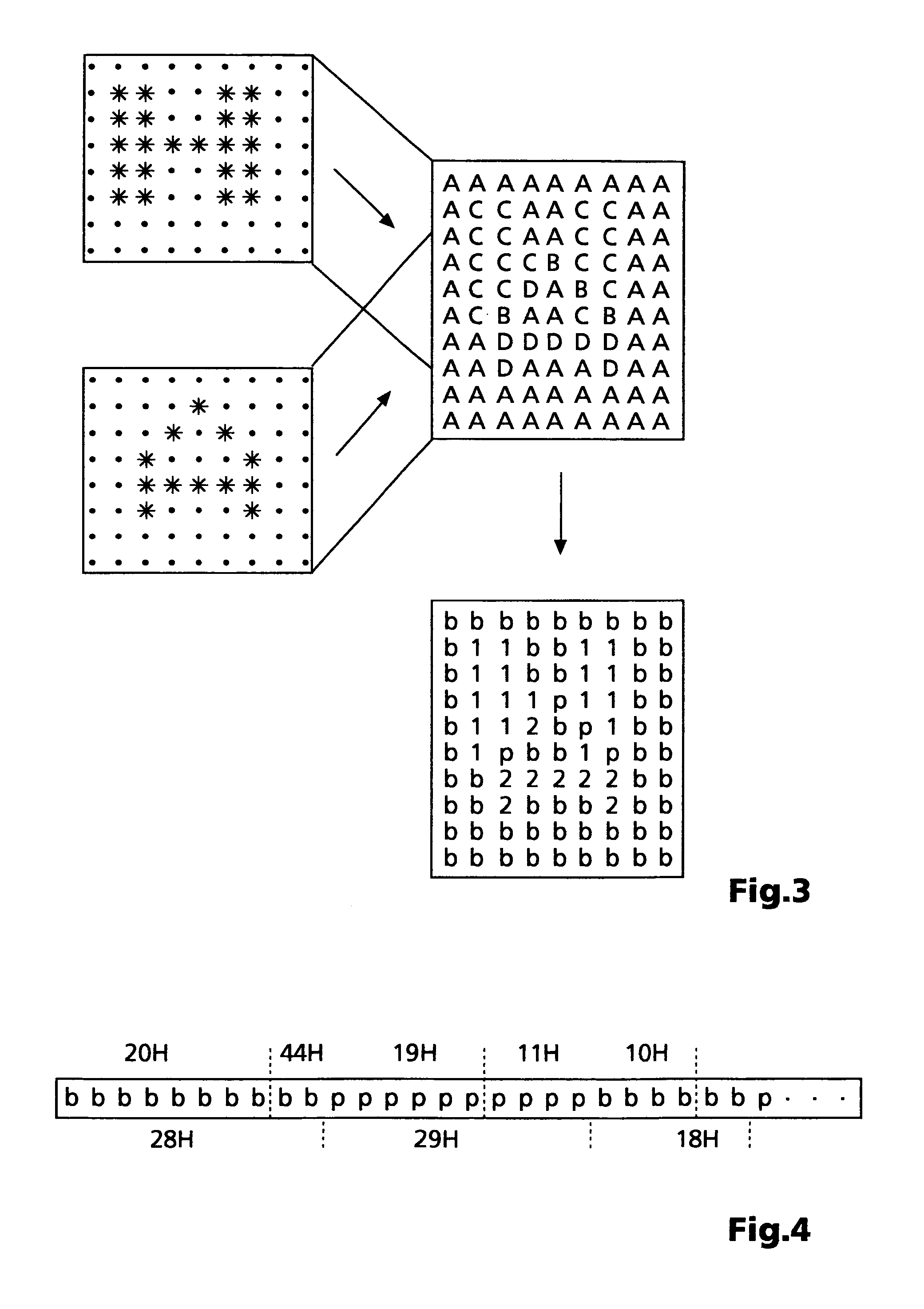Coding method for picture sequence or sub-picture unit
a technology of picture sequence and sub-picture unit, applied in the field of picture sequence or sub-picture unit coding, can solve the problems of no information as to how it is possible to allow a text, and very memory-intensive solutions
- Summary
- Abstract
- Description
- Claims
- Application Information
AI Technical Summary
Benefits of technology
Problems solved by technology
Method used
Image
Examples
Embodiment Construction
[0026]The invention will be explained using the example of a DVD appliance. In FIG. 1, reference number 10 denotes a conventional TV set. A DVD player is denoted by the reference number 11. This DVD player is connected to the TV set 10, for example via a Scart cable. The DVD player 11 produces the analogue television signal, which is fed to the TV set. The reference number 12 denotes a display window, in which a running script is overlaid. The running script can move either from left to right in the display window 12 or, conversely, from right to left. The dashed illustration indicates that the running script is in each case displayed only section by section in the display window. The entire running script is in this case displayed such that it is actually so long that it could not be displayed completely on the screen. According to the DVD Standard, a subtitle is mainly overlaid on the television picture in a display window 12. One sub-picture data unit (SPU) is in each case used f...
PUM
 Login to View More
Login to View More Abstract
Description
Claims
Application Information
 Login to View More
Login to View More - R&D
- Intellectual Property
- Life Sciences
- Materials
- Tech Scout
- Unparalleled Data Quality
- Higher Quality Content
- 60% Fewer Hallucinations
Browse by: Latest US Patents, China's latest patents, Technical Efficacy Thesaurus, Application Domain, Technology Topic, Popular Technical Reports.
© 2025 PatSnap. All rights reserved.Legal|Privacy policy|Modern Slavery Act Transparency Statement|Sitemap|About US| Contact US: help@patsnap.com



